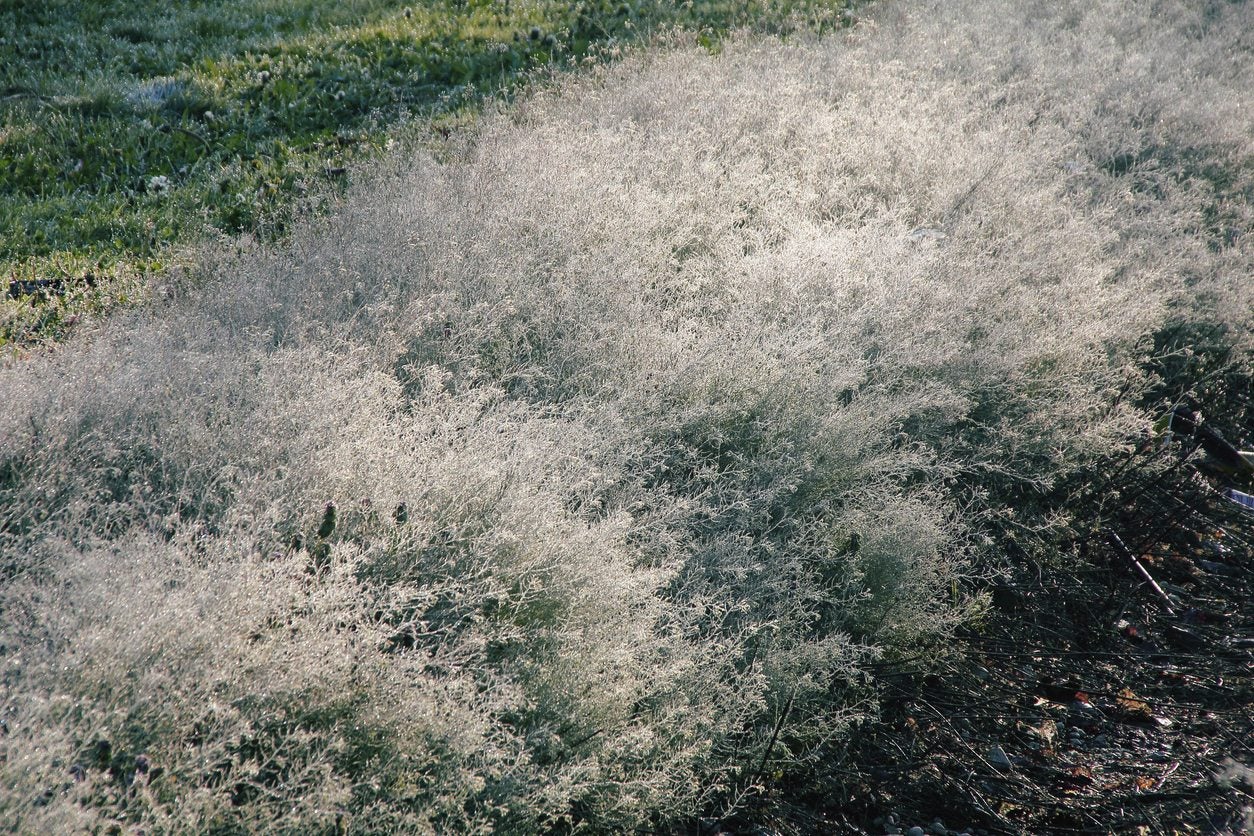Managing Tumbleweeds – Learn About Russian Thistle Control Methods
Controlling Russian Thistle, or tumbleweeds involves getting to them before they begin to travel and disperse their seeds.


Caroline Bloomfield
The tumbleweed’s real name is Russian thistle (Salsola tragus syn. Kali tragus), and it is very, very invasive. If you view tumbling tumbleweed as an icon of the American West, you're not alone. It’s been portrayed that way in movies for decades.
About Russian Thistle Weeds
Russian thistle is a bushy annual forb that many Americans know as tumbleweed. It can grow to three feet (1 m.) tall. Mature Russian thistle weeds break off at ground level and tumble across open lands, hence the common name associated with the plant.
Since one Russian thistle can produce 250,000 seeds, you can imagine that the tumbling action spreads the seeds far and wide.
The Russian thistle was brought to this country (South Dakota) by Russian immigrants. It is thought to have been mixed in contaminated flaxseed. It is a real problem in the American West since it accumulates toxic levels of nitrates that kill cattle and sheep who are using it for forage.
Managing Tumbleweeds
Managing tumbleweeds is difficult. The seeds tumble off the thistle and germinate even in very dry areas. Russian thistle weeds grow rapidly, making control of Russian thistle daunting.
Burning, while a good solution for many other invasive plants, doesn’t work well for Russian thistle control. These weeds thrive on disturbed, burned-out sites, and seeds spread to them as soon as mature thistles tumble over in the wind, which means other forms of Russian thistle control are necessary.
Control of Russian thistle can be done manually or by planting crops.
Gardening tips, videos, info and more delivered right to your inbox!
Sign up for the Gardening Know How newsletter today and receive a free copy of our e-book "How to Grow Delicious Tomatoes".
If the thistle plants are young, you can do a good job of managing tumbleweeds by simply pulling the plants up by their roots before they seed. Mowing the plants very early before they can bloom and produce seed can help, but hand-pulling is more effective.
Try replanting infested areas with other plants. If you keep fields full of healthy crops, such as grasses, you can prevent the establishment of Russian thistle.
Heavy mulching can deprive seeds of sun and stop them from germinating. Also, avoiding disturbance of the soil keeps the seeds from traveling.
In the old West, tumbleweeds were part of sentimental scenery, but controlling them takes some persistence.

Teo Spengler is a master gardener and a docent at the San Francisco Botanical Garden, where she hosts public tours. She has studied horticulture and written about nature, trees, plants, and gardening for more than two decades. Her extended family includes some 30 houseplants and hundreds of outdoor plants, including 250 trees, which are her main passion. Spengler currently splits her life between San Francisco and the French Basque Country, though she was raised in Alaska, giving her experience of gardening in a range of climates.
- Caroline BloomfieldManager of Marketing Communications
-
 Looking For Plants To Give You The Soft And Fuzzies? Try These 5 Fuzzy Leaf Plant Options
Looking For Plants To Give You The Soft And Fuzzies? Try These 5 Fuzzy Leaf Plant OptionsLovers of texture, drama, silver foliage and tactile plants will adore these special sensory garden additions. These fuzzy leaf plant options will leave you all aglow
By Susan Albert
-
 Get Ready For A Summer Of Hummers! Grow These Full Sun Hummingbird Plants and Flowers
Get Ready For A Summer Of Hummers! Grow These Full Sun Hummingbird Plants and FlowersIf you’re lucky enough to enjoy a sunny backyard, make sure you are maxing out on your pollinator opportunities and grow these full sun hummingbird plants and flowers
By Tonya Barnett